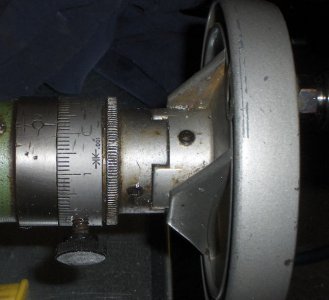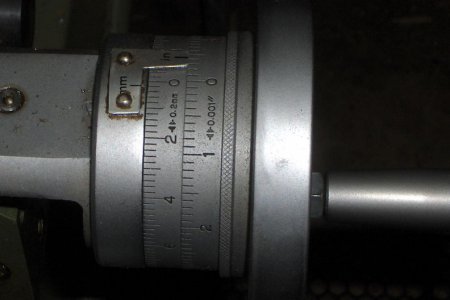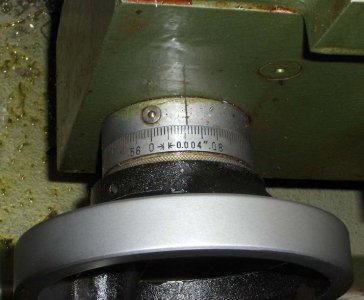I understand what Backlash is and how to measure it but I don't know how to translate that measurement into fractions of an inch or metric decimal notation.
Below is the backlash of my lathe.
The divisions on the handwheel that operates the leadscrew/x-axis goes from 0 - 4 .
Distance between 0 to 1 on the dial measures 3/4 inches .
Each numbered mark is divided into 10 marks ( i.e. there are 10 marks between 0 and 1)
The backlash comes to 2 . 2 (i.e. 2 marks after the 2 on the dial) .
Now how do I read this in inches or metric?
The backlash on the compound rest comes to 1 mark short of 2.9
-
The cross-slide has finer divisions than the leadscrew and the compound rest.
0 to 1 on the dial measures 3/8 " . There are 5 marks between each numbered mark (i.e. 5 marks between 0 and 1)
The backlash is 1 + 3 marks . So it is 1.6?
-
How do I read these backlash measurements as fractions of an inch or in decimal notation ?
Thank You
Below is the backlash of my lathe.
The divisions on the handwheel that operates the leadscrew/x-axis goes from 0 - 4 .
Distance between 0 to 1 on the dial measures 3/4 inches .
Each numbered mark is divided into 10 marks ( i.e. there are 10 marks between 0 and 1)
The backlash comes to 2 . 2 (i.e. 2 marks after the 2 on the dial) .
Now how do I read this in inches or metric?
The backlash on the compound rest comes to 1 mark short of 2.9
-
The cross-slide has finer divisions than the leadscrew and the compound rest.
0 to 1 on the dial measures 3/8 " . There are 5 marks between each numbered mark (i.e. 5 marks between 0 and 1)
The backlash is 1 + 3 marks . So it is 1.6?
-
How do I read these backlash measurements as fractions of an inch or in decimal notation ?
Thank You




